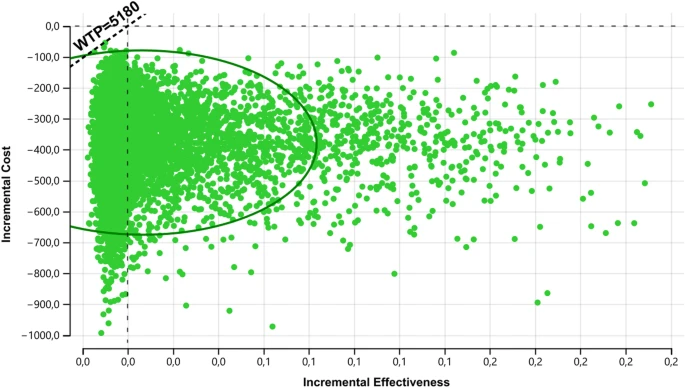- Research
- Open Access
Abstract
Introduction
Despite the growing evidence on efficacy, few economic evaluations have evaluated the cost-utility of Pidotimod (PDT) supplementation to decrease the probability of recurrent respiratory tract infections in children. This study aimed to determine the cost-utility of PDT to reduce the incidence rate of recurrent respiratory tract infections in children.
Methods
A decision tree model was used to estimate the cost and quality-adjusted life-years (QALYs) of PDT in a patient aged 1–6 with a history of recurrent respiratory tract infections.
Multiple sensitivity analyses were conducted to evaluate the robustness of the model. Cost-effectiveness was evaluated at a willingness-to-pay (WTP) value of US$5180.Results
The base-case analysis showed that compared with placebo, PDT was associated with lower costs and higher QALYs. The expected annual cost per patient with PDT was US$797 (CI 95% US$794- US$801) and with placebo was US$1175 (CI 95% US$1169- US$1181). The QALYs per person estimated with PDT was 0.95 (CI 95% 0.94–0.95) and with placebo was 0.94 (CI 95% 0.94–0.94). The NMB with PDT was US$ 4121 (CI 95% 4114–4127) and with placebo was US$ 3710 (CI 95% 3700–3720). This position of absolute dominance (PDT has lower costs and higher QALYs than placebo) of PDT it is unnecessary to estimate the incremental cost-effectiveness ratio.Conclusion
In conclusion our study shows that PDT is a cost-effective strategy to reduce the incidence rate of recurrent respiratory tract infections in children. Our study provides evidence that should be used by decision-makers to improve clinical practice guidelines.


No comments:
Post a Comment